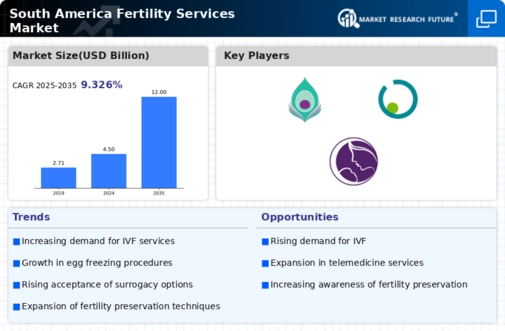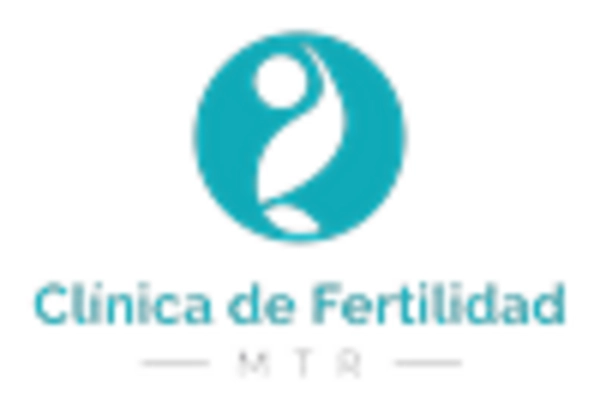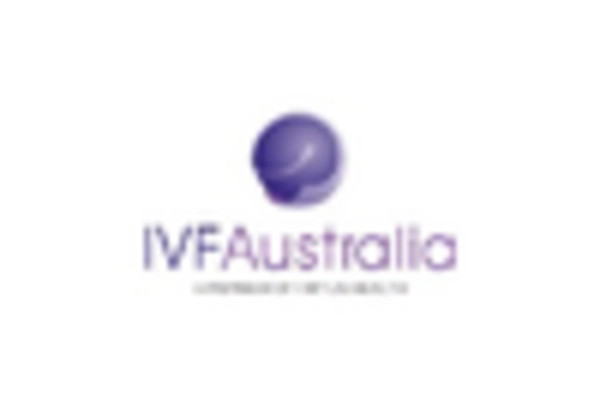Government Initiatives and Funding
Government initiatives and funding aimed at improving reproductive health services are playing a pivotal role in the fertility services market in South America. Various countries in the region are implementing policies to enhance access to fertility treatments, including subsidies and financial assistance programs for couples seeking help. This support is crucial, as the cost of fertility treatments can be a significant barrier for many. Recent reports indicate that government funding for reproductive health services has increased by approximately 30% in the past few years. Such initiatives not only alleviate financial burdens but also promote awareness and accessibility of fertility services. The fertility services market is likely to benefit from these government efforts, leading to increased utilization of services and improved outcomes for couples facing infertility challenges.
Rising Female Workforce Participation
The increasing participation of women in the workforce across South America is significantly impacting the fertility services market. As women pursue higher education and career opportunities, many are delaying childbirth, which can lead to fertility challenges. Data indicates that the average age of first-time mothers has risen, with many women now having children in their late 30s or early 40s. This trend creates a growing need for fertility services, as older women may face more difficulties in conceiving. Consequently, the fertility services market is adapting to cater to this demographic, offering a range of treatments and support services tailored to the needs of working women. This shift not only reflects changing societal norms but also highlights the importance of accessible fertility services in supporting women's reproductive choices.
Cultural Shifts Towards Family Planning
Cultural shifts in South America regarding family planning are influencing the fertility services market. As societal norms evolve, there is a growing acceptance of assisted reproductive technologies and family planning services. Many individuals and couples are now more open to exploring fertility treatments as viable options for starting a family. This change in perception is reflected in the increasing number of consultations and treatments sought by couples. The fertility services market is responding to this trend by offering a wider array of services, including counseling and support for family planning. As cultural attitudes continue to shift, the demand for fertility services is expected to rise, creating opportunities for growth and innovation within the market.
Increasing Awareness of Fertility Issues
The growing awareness of fertility issues among the population in South America is a crucial driver for the fertility services market. Educational campaigns and media coverage have contributed to a heightened understanding of reproductive health, leading to more individuals seeking assistance. According to recent data, approximately 15% of couples in South America experience infertility, which has prompted a surge in demand for fertility services. This awareness is not only fostering a cultural shift towards seeking help but also encouraging discussions about reproductive health, thereby expanding the market. As more people recognize the importance of addressing fertility challenges, the fertility services market is likely to see continued growth, with an increasing number of clinics and services being established to meet this demand.
Advancements in Reproductive Technologies
Technological advancements in reproductive technologies are transforming the fertility services market in South America. Innovations such as in vitro fertilization (IVF), preimplantation genetic testing, and cryopreservation techniques have improved success rates and expanded options for couples facing infertility. The fertility services market is witnessing a rise in the adoption of these technologies, with IVF procedures alone increasing by over 20% in recent years. As clinics invest in state-of-the-art equipment and training, patients are presented with more effective and personalized treatment plans. This technological evolution not only enhances the chances of successful conception but also attracts a broader clientele, further driving growth in the market. The ongoing research and development in reproductive health technologies suggest a promising future for the fertility services market.


















Leave a Comment